Bed bugs get their name for a reason.
They are most commonly found on your bedding or hiding close by.
Areas they prefer to live in include your box spring, bed frame, and especially…
Within the folds of your mattress.
Since bed bugs are only ¼ of an inch long, they don’t occupy much space on their own. This makes it possible for a large colony to make its nest in a single mattress.
As a nocturnal species, bed bugs come out at night to feed. They typically target the upper torso or other exposed areas of skin.
Biting along the neck.
Shoulders.
And both arms.

For easier access to these areas, bed bugs are more likely to nest where the mattress meets the headboard.
If you suspect your mattress is infested, it’s best to understand how to identify these creatures.
So how exactly can you tell if bed bugs are residing around your bed?
Let’s dive in.
Page Contents:
What Do Bed Bugs Look Like on a Mattress?
Though they are incredibly tiny, bed bugs will still stand out on a mattress. They are reddish-brown in color, and roughly the size of a pumpkin seed.
It’s rare to spot bed bugs roaming around on their own. If you do spot just one bed bug, it’s like a colony is nearby.
The colony will consist of the following types of bed bugs:
- Mature adults
- Larvae
- Nymphs (which will regularly shed their skin)
- And unhatched eggs
Pictures of Bed Bugs on a Mattress
Below are a few photos of mattresses that are infested with bed bugs.
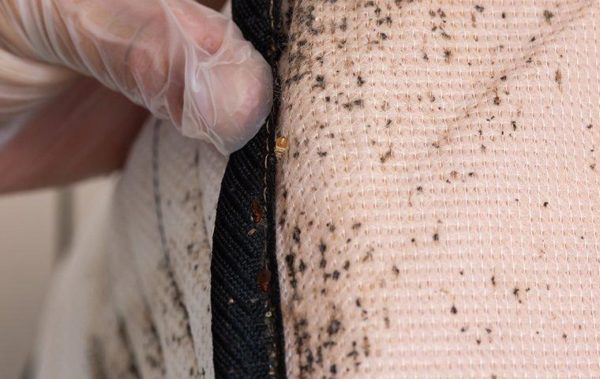
Above is a heavily bed bug-infested mattress. Notice the large number of black specks present, these indicate bed bug droppings.
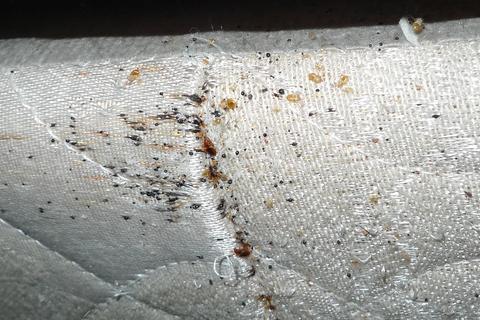
The picture above is a mattress from a newly discovered infestation at a motel. Bed bugs are the reddish-brown insects in the middle of the image, the yellow, pearl-like objects are their eggs.
Can Bed Bugs Live on Air Mattresses?
Bed bugs are adaptable insects, and are quite capable of living in nooks or crannies they come across. This means that yes, bed bugs can live in an air mattress.
However, air mattresses aren’t as suitable for bed bugs as normal mattresses are.
This is because..
Most air mattresses are made of vinyl and PVC, which makes it harder for bed bugs to burrow inside them.
The lack of other bedding components, such as box springs and headboards, also deprives bed bugs of valuable hiding places.
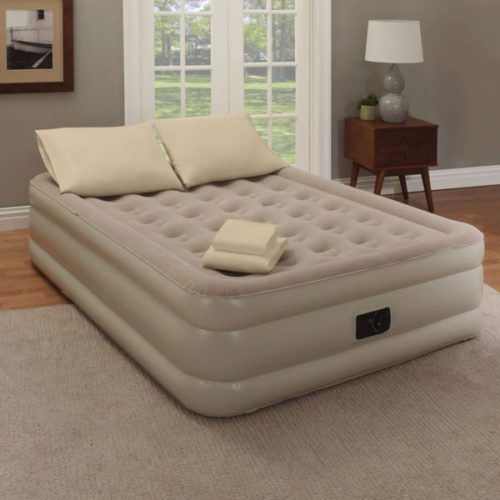
It’s also much easier to bed bug-proof an air mattress than a regular mattress. Plastic covers can be placed over an air mattress, trapping any bed bugs inside and keeping more bugs out.
Whereas regular mattresses will require a special bed bug encasement.
Signs of Bed Bugs on a Mattress
There are several indicators that bed bugs are living inside your mattress or bedding.
The most obvious sign is spotting an active insect scurrying across.
You might also notice rust-colored stains dotting your mattress. These stains are actually dried bloodstains.
This could be blood that was left behind after a feeding, or the remains from bed bugs that were likely crushed in your sleep.
Bed bugs aren’t fast travelers, so it’s quite easy for you to roll over them while you toss and turn.
There might also be darker stains present in the mattress, roughly the size of a bullet point. These spots are bed bug feces, which can bleed through the fabric & leave permanent stains if left unwashed.
Bed bugs commonly defecate during feeding sessions.
In fact…
20% of the time, they will make excrement while feeding to make room for new food in their digestive system.
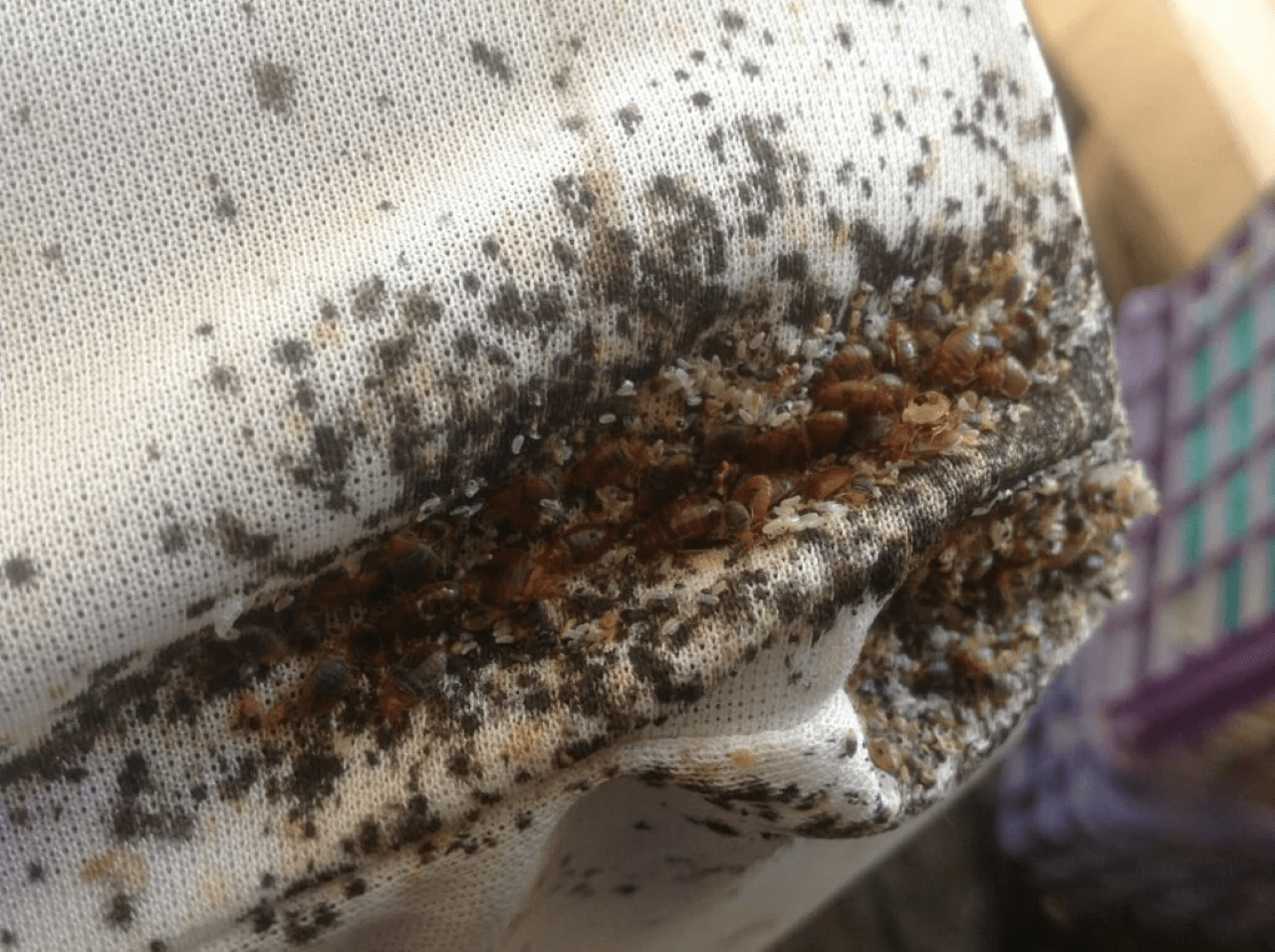
If you notice translucent, pearl-like objects or pale-yellow skins, then you have evidence of bed bugs reproducing. The former is a sign of bed bug eggs, which hatch roughly 1 week after they’re laid.
Meanwhile, the skins are actually shed from bed bug nymphs.
This shed skin indicates that the larvae are maturing.
(not what you want to see).
A female bed bug lays an average of 1 to 3 eggs per day. Once a larva hatches, it will fully mature after 5 weeks.
What to Spray on Mattresses for Bed Bugs
If you’re looking for a quick solution to eradicating bed bugs, the mind immediately thinks of insecticides.
However, chemical pesticides contain several toxic ingredients that can cause health problems in humans with enough exposure.
(Especially when used indoors).
For the purpose of spraying a mattress down, biopesticides are the best product to use.
Biopesticides can be best described as natural scents which are harmful to bed bugs, but are safe (and sometimes pleasant) to humans.
Some examples of biopesticides include the following:
- Citrus: The smell of citrus fruits, like lemons or oranges, is detrimental to all kinds of insects. Bed bugs, like other insects, are highly sensitive to the smell of citrus, and prolonged exposure could disrupt their ability to spread.
- Cinnamon: Cinnamon also has a strong scent, but there’s another reason why bed bugs hate it. It contains a compound called eugenol which gives cinnamon its flavor: eugenol is also an ingredient in chemical pesticides, making it highly effective against infestations.
- Lavender: Humans find the scent of lavender to be relaxing, but to bed bugs, it’s the furthest thing from calming. Lavender contains a compound called linalool which, like eugenol, is also found in most insecticides.
Luckily we wrote a full article on scents that bed bugs hate. Click here to learn more.
Baking Soda on Mattresses for Bed Bugs
Baking soda is a remarkably effective agent when it comes to killing bed bugs. What makes it so potent is the harmful effects it has on their tiny insect bodies.
If a bed bug ingests baking soda, the chemicals inside the baking soda will form carbon dioxide gas. The gas will eat away at the protective lining inside the bed bug’s stomach, killing them from the inside.
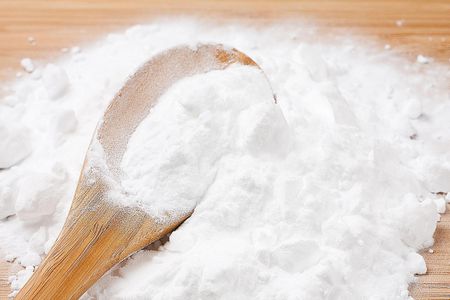
Walking over baking soda puts the bed bug at risk of getting particles trapped in its exoskeleton. The soda particles will cut through the bug’s underbelly or dissolve through the top of the exoskeleton, causing a slow death.
This is also how diatomaceous earth, a similar product used in bed bug infestations, works to kill the insects.
Baking soda will also absorb all the water out of a bed bug’s system, eventually causing death from dehydration.
If bed bugs are observed lurking around your mattress, sprinkle some baking soda around areas where they are most likely to travel. Bed bugs will have no choice but to pass over the soda, which could kill them in 2 to 3 days.
Bed Bug Mattress Covers
Mattress covers serve a dual purpose: they trap any bed bugs already inside the mattress, while also preventing any new bed bugs from working their way in.
If you hire a professional bed bug exterminator, then mattress covers can make their job easier.
The bulk of bed bugs will be concentrated in one place.
(Assuming they haven’t died of starvation yet).
And any that aren’t trapped will be exposed out in the open.
It’s important to note that certain brands of cover are designed specifically to counter bed bugs. These brands are labeled as “bed bug proof” or “escape-proof,” since bed bugs can crawl through the zippers or seams of other types of cover.
Make sure that when you buy a mattress cover, it covers both the mattress and the box spring. In order to work properly, a mattress cover needs to be properly installed: otherwise, bed bugs will continue to pose a threat to you while you’re asleep.
Bed bug mattress covers are commercially available in most stores, though choosing which one to buy can be stressful. If you’re looking for a recommendation, you can check out our advice on the top bed bug mattress covers.
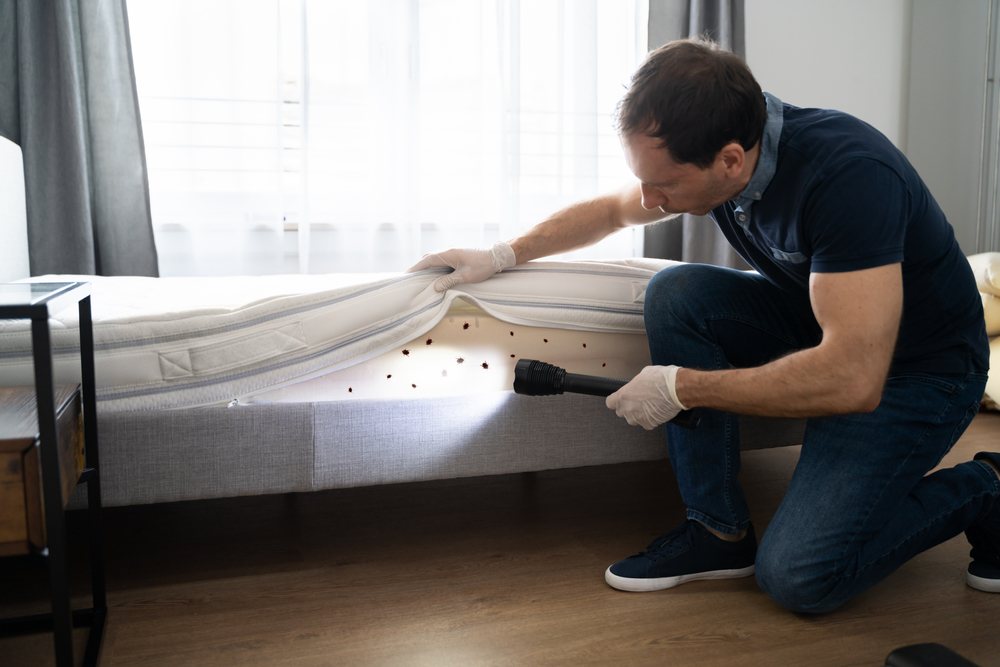

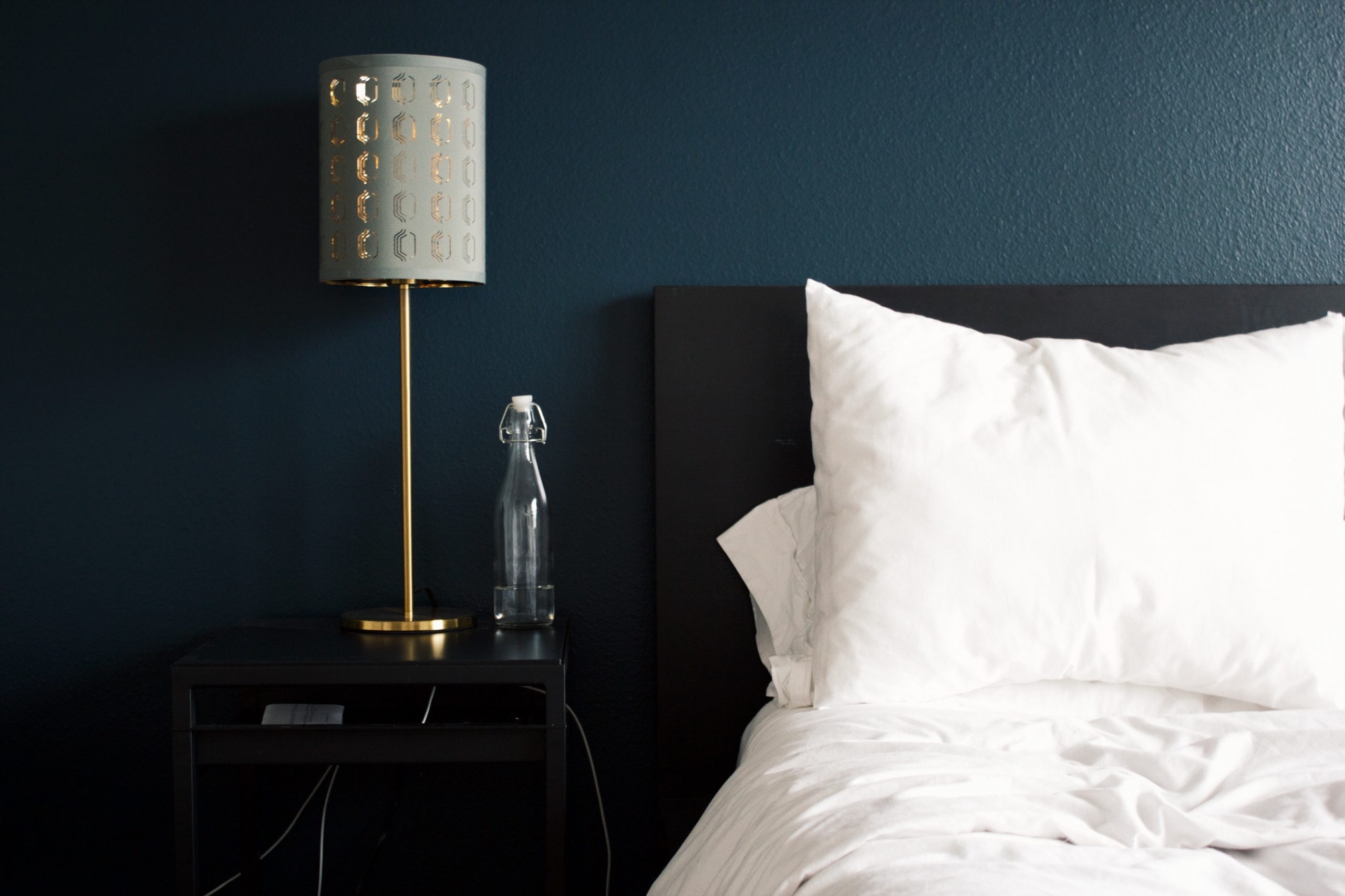


Great article, James! This really helped me get more information regarding bed bugs on mattresses! I appreciate your efforts 🙂